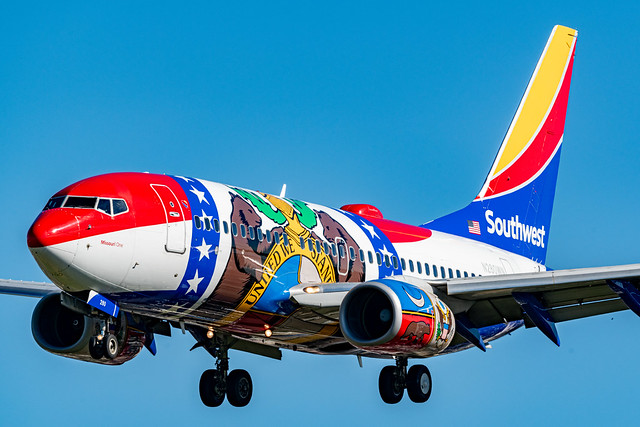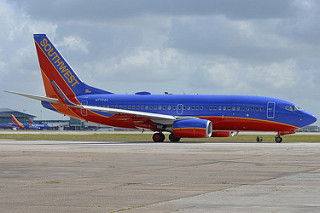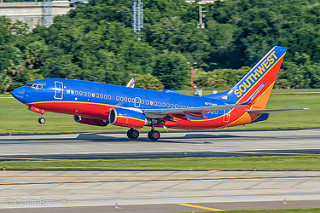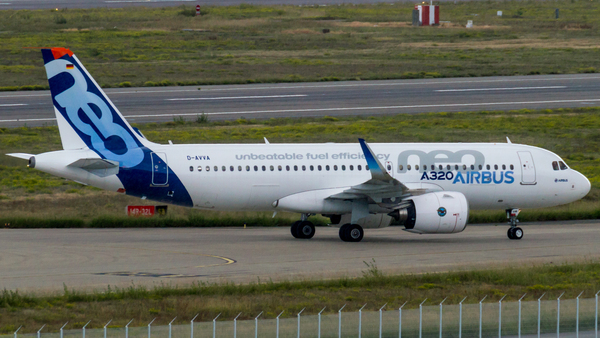Southwest B737 at Burbank on Feb 13th 2010, TCAS resolution
Last Update: February 13, 2013 / 13:57:30 GMT/Zulu time
Incident Facts
Date of incident
Feb 13, 2010
Classification
Accident
Airline
Southwest Airlines
Flight number
WN-2534
Departure
Las Vegas, United States
Destination
Burbank, United States
Aircraft Registration
N221WN
Aircraft Type
Boeing 737-700
ICAO Type Designator
B737
The FAA reported in their preliminaries, that as a result of the avoidance maneouver two cabin crew members received injuries. One received serious, the other minor injuries.
FAA spokesman Ian Gregor said, that the Southwest Airlines flight crew responded to a TCAS RA with a small private aircraft at 6000 feet about 20nm from Burbank requiring the Southwest Airlines to increase their descent, the minimum lateral distance between the aircraft on diverging trajectories was roughly 2nm. Subsequently the airplane climbed back to 6000 feet. A flight attendant fractured her shoulder, another flight attendant received bruises.
Southwest Airlines reported, that both flight attendants were taken to a local hospital and could already be released after treatment.
The NTSB have initiated an investigation into the accident.
On Feb 24th 2010 the NTSB reported, that the Boeing 737 was approaching 6000 feet MSL when the TCAS issued a RA. The crew initiated a descent of about 1500-2000 fpm and subsequently a climb of 1500-2000 fpm. The passengers were all seated with seat belt fastened, the three flight attendants were standing in the aft galley preparing for arrival. One flight attendant received serious, the other minor injuries.
On Feb 13th 2013 the NTSB released their brief final report concluding the probable cause of the accident was:
The pilotÂ’s abrupt airplane pitch change maneuver. Contributing to the accident was the flight crewÂ’s failure to maintain the heading specified by the air traffic controller, which would have avoided the near collision course with an unidentified airplane that triggered the traffic alert and collision avoidance system resolution advisory.
The NTSB added that the crew had inadvertently strayed off the heading 190 assigned by ATC by 27 degrees, the captain provided testimony that he had selected 190 into the MCP, the aircraft was still descending towards the cleared 6000 feet, the autopilot settings had been cross checked by the first officer. The crew subsequently was informed about traffic in their 11 o'clock position 4nm ahead and began scanning for the traffic, a TCAS traffic advisory activated identifying the conflicting traffic 500 feet below them, the captain reduced the rate of descent. After being queried by ATC regarding the heading the captain noticed he had permitted the aircraft to turn onto a heading of 163 degrees and steered the aircraft back onto 190, during that turn a TCAS resolution advisory to descend was issued, the crew initiated a TCAS response at about 1500-2000 feet per minute descent followed by a resolution advisory to climb at 2000+ fpm, which the crew also complied with. During that climb the crew sighted the conflicting traffic slightly above about 2nm ahead.
One of the flight attendant received a fractured left scapula as result of the avoidance maneouvers.
Aircraft Registration Data
Incident Facts
Date of incident
Feb 13, 2010
Classification
Accident
Airline
Southwest Airlines
Flight number
WN-2534
Departure
Las Vegas, United States
Destination
Burbank, United States
Aircraft Registration
N221WN
Aircraft Type
Boeing 737-700
ICAO Type Designator
B737
This article is published under license from Avherald.com. © of text by Avherald.com.
Article source
You can read 2 more free articles without a subscription.
Subscribe now and continue reading without any limits!
Read unlimited articles and receive our daily update briefing. Gain better insights into what is happening in commercial aviation safety.
Send tip
Support AeroInside by sending a small tip amount.
Related articles
Southwest B737 at Cleveland on Oct 29th 2025, loss of separation with helicopter
A Southwest Airlines Boeing 737-700, registration N280WN performing flight WN-1333 from Baltimore,MD to Cleveland,OH (USA), was on final approach to…
Southwest B737 at Panama City on Jun 14th 2025, turbulence injures passenger
A Southwest Airlines Boeing 737-700, registration N969WN performing flight WN-3508 from Dallas Love,TX to Panama City,FL (USA) with 142 passengers…
Southwest B737 at Houston on Apr 17th 2025, engine shut down in flight
A Southwest Airlines Boeing 737-700, registration N7724A performing flight WN-3006 from Houston Hobby,TX (USA) to San Jose Cabo (Mexico) with 134…
Southwest B738 at Orlando on Mar 20th 2025, attempted to takeoff from taxiway
A Southwest Airlines Boeing 737-800, registration N8315C performing flight WN-3278 from Orlando,FL to Albany,NY (USA), was cleared for takeoff from…
Southwest B737 at San Diego on Aug 11th 2023, cleared to line up then forgotten, overflown by Citation on short final
A Southwest Airlines Boeing 737-700, registration N7734H performing flight WN-2493 from San Diego,CA to San Jose,CA (USA), was at holding point B1…
Newest articles
Southwest B737 at Cleveland on Oct 29th 2025, loss of separation with helicopter
A Southwest Airlines Boeing 737-700, registration N280WN performing flight WN-1333 from Baltimore,MD to Cleveland,OH (USA), was on final approach to…
Frontier A20N at New York on Oct 30th 2025, fuel leak, engine shut down in flight
A Frontier Airlines Airbus A320-200N, registration N394FR performing flight F9-3546 from San Juan (Puerto Rico) to New York JFK,NY (USA) with 152…
Subscribe today
Are you researching aviation incidents? Get access to AeroInside Insights, unlimited read access and receive the daily newsletter.
Pick your plan and subscribePartner

ELITE Simulation Solutions is a leading global provider of Flight Simulation Training Devices, IFR training software as well as flight controls and related services. Find out more.
SafetyScan Pro provides streamlined access to thousands of aviation accident reports. Tailored for your safety management efforts. Book your demo today
AeroInside Blog
Popular aircraft
Airbus A320Boeing 737-800
Boeing 737-800 MAX
Popular airlines
American AirlinesUnited
Delta
Air Canada
Lufthansa
British Airways






